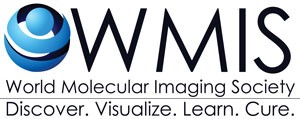CULVER CITY, Calif., December 15, 2015 – The World Molecular Imaging Society hosted its annual World Molecular Imaging Congress (WMIC) 2015 in Honolulu, Hawaii in September. The theme of the 2015 meeting was “Precision Medicine…Visualized.” Presentations are available as part of membership to the WMIS at https://www.wmis.org/meetings/archives-of-past-meetings/wmic-2015-presentations/.
“As research takes strides towards precision medicine the field of molecular imaging is in greater demand and the board spectrum of these studies represents growth in our field,” said Jason Lewis, Ph.D., President, WMIS 2014-2015. “I truly believe the difference in new and better treatment options, and better clinical outcomes will stem from a better understanding of diseases that is based on molecular imaging.”
The meeting included over 300 oral presentations including plenary, educational and informative sessions as well as over 900 poster presentations.
Results from five first in human studies released for the first time at WMIC provide important new insight for discovery, detection, immunotherapy response and surgical options for patients with colorectal, breast, ovarian, prostate, head and neck cancers. These studies are among around 1,200 abstracts released at the WMIC meeting and include findings demonstrating new or refined methods for visualizing and understanding the most highly diagnosed cancers at a molecular level.
The top five ranked abstracts are listed as follows:
1. “A VEGF targeted fluorescent tracer – Results of the Hi-Light study, a first in human imaging study” presented by Niels J. Harlaar, M.D. Ph.D. University of Groningen
The authors tested a near-infrared fluorescent tracer targeting VEGF-A, in combination with an intraoperative camera system. Seven patients were analyzed. In two patients, the method detected cancer tissue that was initially missed by inspection and palpation. The high sensitivity (100%) of fluorescent imaging gives the surgeon potentially a real-time tool for intraoperative decision-making. This indicates that this technique could prevent both undertreatment (complete detection of malignant lesions) and overtreatment (non-malignant lesions that do not require resection).
2. “First Clinical Trial on Safety and Feasibility of KDR-targeted Ultrasound Molecular Imaging in Patients with Breast and Ovarian Lesions” presented by Juergen Willmann, M.D., Stanford University
The study is the first in woman clinical trial on using ultrasound molecular imaging in patients with breast and ovarian lesions. The study showed that the molecularly-targeted contrast agent BR55 is safe in humans and allows visualization of a molecular marker such as KDR non-invasively with ultrasound, without exposing patients to ionizing radiation. This is of paramount importance for helping the field of ultrasound molecular imaging to further develop and expand into various other potential clinical applications.
3. “First in human study of [18F]F-AraG, a PET tracer for monitoring anti-tumor immune response during cancer immunotherapy” presented by S. S. Gambhir, M.D., Ph.D., Stanford University
The authors obtained an exploratory investigational new drug (IND # 123591) approval from USA FDA to analyze the kinetics, dosimetry and safety of [18F]F-AraG in healthy human volunteers. F-AraG accumulates in CD3/CD28 antibody activated human T cells at a 10 fold higher level than in naive T cells in mice. Accumulation in these tumors is due primarily to the presence of activated T cells. First in human results show that clinical trials should proceed to include cancer patients for assessment F-AraG ability to monitor anti-tumor immune response during cancer immunotherapy. The author noted that several clinical trials at multiple centers are in progress. They believe that F-AraG will help to optimize patient outcomes on an individual basis allowing better more precise knowledge to continue or change an immunotherapy. The author stated a conflict of interest, as he is a founder of CellSight, which has IP rights for F-AraG.
4. “Metabolic dynamics of hyperpolarized [1-13C] pyruvate in human prostate cancer” presented by Kristin Granlund, Ph.D., Memorial Sloan-Kettering Cancer Center
Pyruvate can be used to observe early changes in cancer metabolism. The authors obtained an exploratory IND (#1259470) to use the SpinLab hyperpolarizer for the first time to image prostate cancer patients. A sterile, single-use fluidpath was optimized in-house and used for 6 patient injections. Using MR spectroscopic imaging, they were able to study the temporal dynamics of pyruvate and its conversion to lactate in regions of prostate tumor. These data will be used to develop a protocol for 3D imaging, which will be useful for monitoring a tumor response to treatment as well as tumor aggressiveness, and this is of great need in the setting of castrate-resistant prostate cancer.
5. “Fluorescence-guided Surgical Navigation in Patients with Head and Neck Cancer” presented by Jason Warram, Ph.D., University of Alabama at Birmingham
The authors proposed a method of ‘seeing’ cancer in the operating room using fluorescence-guidance with cancer-specific antibodies would have the potential to significantly change surgical outcomes. The authors believe that at some point every surgical procedure will utilize some form of cancer specific identification to assist the surgeon in identifying cancer from normal tissue. Currently removal of these tumors is devastating, with both cosmetic and functional detriment for these patients. By enabling the surgeon to remove all the cancer while salvaging all uninvolved normal tissue, we hope that this technique will improve overall survival and ability for patients to swallow and speak after their surgery.
ABOUT WORLD MOLECULAR IMAGING SOCIETY
The WMIS is dedicated to developing and promoting translational research through multimodality molecular imaging. The education and abstract-driven WMIC is the annual meeting of the WMIS and is held in conjunction with partner societies including the European Society for Molecular Imaging (ESMI) and the Federation of Asian Societies for Molecular Imaging (FASMI). WMIC provides a unique setting for scientists and clinicians with very diverse backgrounds to interact, present, and follow cutting-edge advances in the rapidly expanding field of molecular imaging that impacts nearly every biomedical discipline. Industry exhibits at the congress included corporations who have created the latest advances in preclinical and clinical imaging approaches and equipment, providing a complete molecular imaging educational technology showcase. For more information: www.wmis.org
###
CONTACT: LAUREN WHITMAN
PHONE: 865-308-2312
E-MAIL: LWHITMAN@WMIS.ORG
